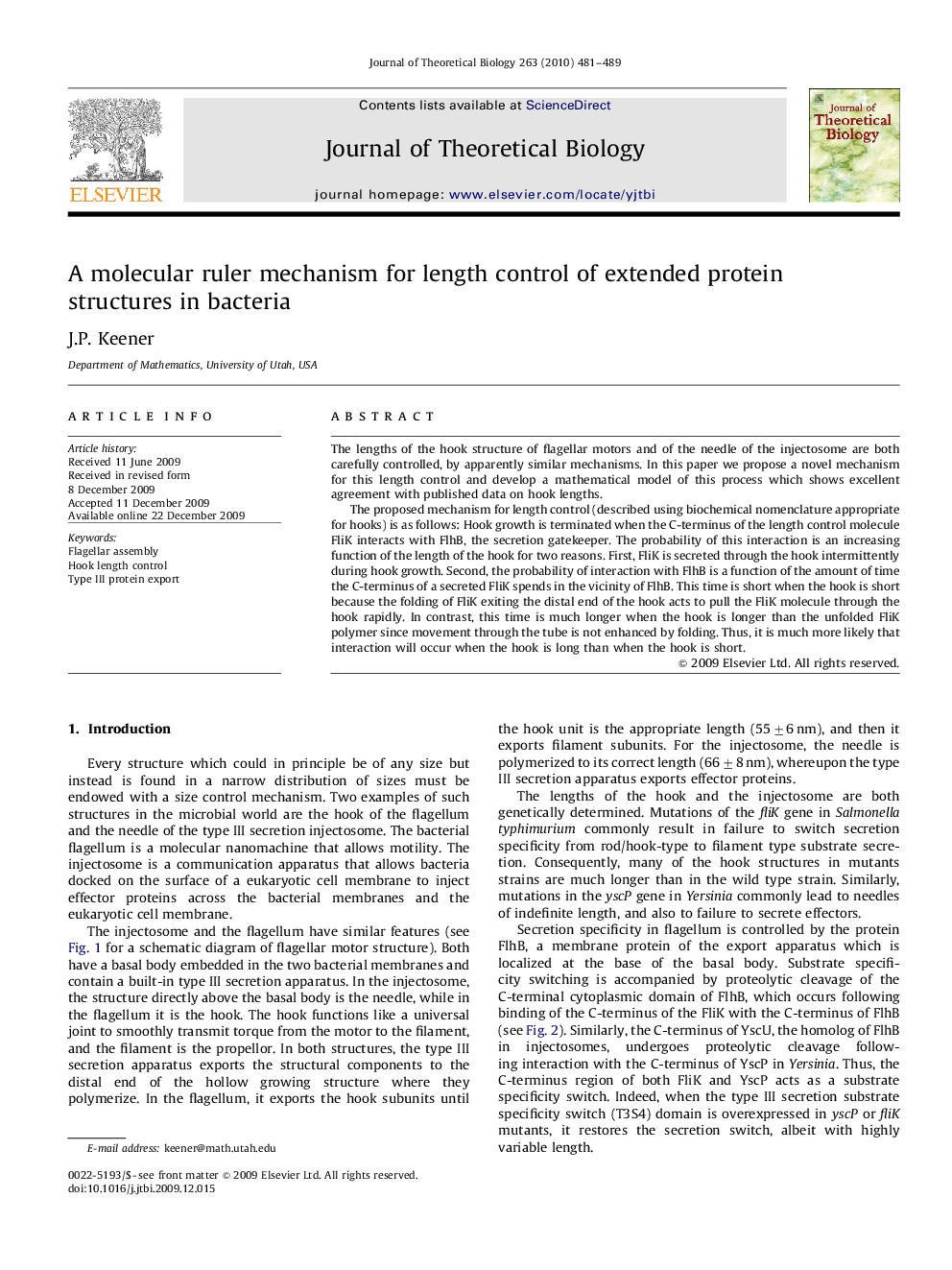| Article ID | Journal | Published Year | Pages | File Type |
|---|---|---|---|---|
| 4497823 | Journal of Theoretical Biology | 2010 | 9 Pages |
Abstract
The proposed mechanism for length control (described using biochemical nomenclature appropriate for hooks) is as follows: Hook growth is terminated when the C-terminus of the length control molecule FliK interacts with FlhB, the secretion gatekeeper. The probability of this interaction is an increasing function of the length of the hook for two reasons. First, FliK is secreted through the hook intermittently during hook growth. Second, the probability of interaction with FlhB is a function of the amount of time the C-terminus of a secreted FliK spends in the vicinity of FlhB. This time is short when the hook is short because the folding of FliK exiting the distal end of the hook acts to pull the FliK molecule through the hook rapidly. In contrast, this time is much longer when the hook is longer than the unfolded FliK polymer since movement through the tube is not enhanced by folding. Thus, it is much more likely that interaction will occur when the hook is long than when the hook is short.
Related Topics
Life Sciences
Agricultural and Biological Sciences
Agricultural and Biological Sciences (General)
Authors
J.P. Keener,
